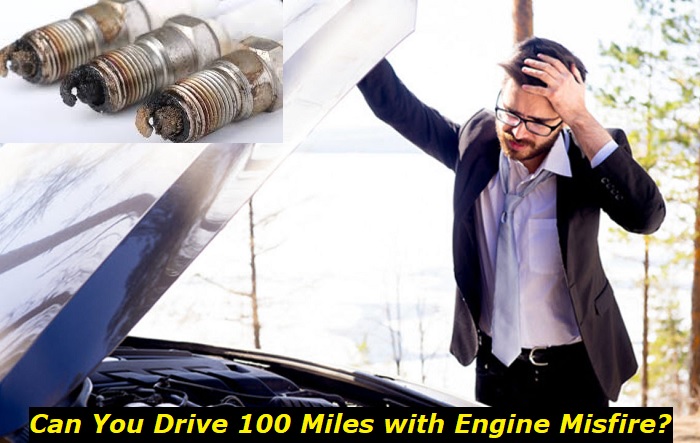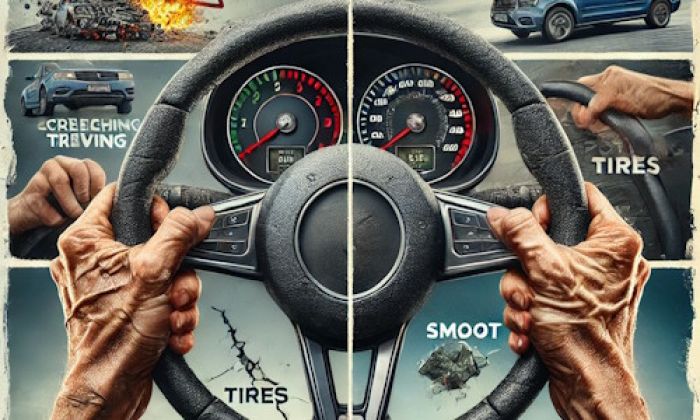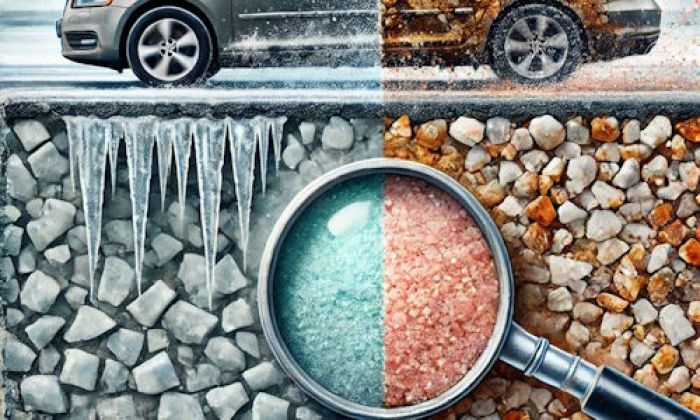Your check engine light is flashing, your car is losing power and it makes a popping noise when you accelerate. Your car has started misfiring, but you still have some places to go and some distance to drive before you can get your car fixed. What could happen if your drive 100 miles with a misfire? How far can you drive with a misfire?
Engine use mistakes highlights
- Level of importance:important
- When done:just driving, DIY repairs, DIY maintenance
- Cost of mistake:$200 - $4,000
- How to avoid:read driver's manual, learn how to drive safely, use professional repair andmaintenance
- Consequences:fatal engine issues, expensive breakdowns
- DIY solutions:sometimes possible
2
What is a Misfire?
A misfire is caused when one or more of the cylinders in the engine fails to burn the air-fuel mixture completely. This results in unburned fuel escaping the cylinders and getting into the exhaust gases.
Misfiring has several effects on the engine.
- Reduced power: The engine will put out less power than normal since one or more of the cylinders aren't producing power.
- Vibration and jerking: The engine will run rough and start to shake or vibrate because of the uneven combustion from the cylinders. This vibration is especially noticeable as a rough idle when the car isn't moving.
- Increased emissions: The unburned fuel vapors escaping into the exhaust will cause an increase in the vehicle's emissions.
- Reduced fuel efficiency: The engine's fuel economy will drop because some of the cylinders are failing to burn fuel. This will cause the car to use up more fuel to produce the same amount of power.
- Popping sounds: A misfiring engine will often produce a loud, startling, popping sound. This sound is the result of unburned fuel vapor combusting as it exits the hot exhaust system.
There are many different causes of engine misfires. The most common cause is a faulty or malfunctioning sparkplug, but as sparkplugs become more durable, other causes are becoming more common as well.
- Faulty sparkplugs: This is the most common cause of engine misfiring. If a sparkplug wears down or starts to fail, it won't be able to create the spark necessary to ignite the air-fuel mixture. This results in a failed combustion, allowing fuel vapor to escape into the car's exhaust.
- Faulty ignition coils: Ignition coils provide the electrical energy the sparkplugs need to burn the fuel. If an ignition coil fails, it won't be able to power the sparkplugs, and combustion won't occur in the cylinder.
- Clogged fuel injectors: Fuel injectors introduce fuel into the cylinders for combustion. They use a very small aperture that atomizes the fuel to allow for a more thorough air-fuel mixture. This aperture is easily blocked, preventing the fuel from getting into the cylinder. This leads to the cylinder misfiring.
- Faulty Oxygen Sensor: The oxygen sensor detects the proportion of unburned air in the exhaust to determine how much fuel to send to the engine. If the sensor malfunctions, it could lead to the engine receiving too little fuel. This will cause the cylinders to run lean and can cause a situation where the cylinders have too little fuel to burn.
What Happens if You Drive 100 Miles with an Engine Misfire?
It's difficult to estimate exactly how long you can drive with a misfiring engine. Your engine will continue to run, although noisily and rough, and the car will move, but it is unsafe to drive in this condition.
Your car will lose power because of the malfunctioning cylinder. This is unsafe, as it could lead to sluggish acceleration and difficulty matching the flow of traffic.
You will also have a hard time controlling your car because of the violent vibrations and the reduced power.
There are many different conditions that will determine how long your car will be able to last in this condition.
The most important thing to consider is the severity of the misfire. If a scan reveals that your car is misfiring in multiple cylinders, then you probably don't have very long to drive in that condition. The more cylinders that are misfiring, the higher the risk.
Another issue to consider is the cause of the misfire. A problem with a single sparkplug might not cause additional issues. However, an issue with a clogged fuel injector could put a strain on the fuel pump which causes the pump to break down.
This means that your engine could run fine for another 100 miles with a misfire, or the engine could break down completely within 10 miles. There's no way to tell for certain, and it isn't worth the risk of finding out.
Generally, it's not recommended that you drive any more than you absolutely need to with a misfiring engine. An engine misfire triggers a flashing Check Engine Light for a reason. A misfire is a very serious situation that can lead to further damage to the engine and the car.
The best thing to do as soon as you experience misfiring is to get your car to a mechanic immediately.
What Are the Dangers of Driving with a Misfiring Engine?
An engine misfire is dangerous because it can lead to damage to the engine if it is not dealt with on time. In serious cases, misfiring can even result in the car going up in flames.
Here are some of the problems that could develop if you continue to drive with a misfiring engine.
1) Engine Damage
Engine misfiring is one of the worst-case scenarios for the engine. Misfiring doesn't mean that something has gone critically wrong in the engine, but it does mean that something could go very wrong very soon. Misfires can cause damage to the engine if left unchecked for too long.
Engine damage from misfires is unpredictable. The excessive vibration of the engine can cause damage to the engine mounts. The vibrations can also cause wear on the many different hoses and belts in the engine. They can also stretch or come loose because of the movement of the engine.
In some cases, the misfiring cylinder could have fuel vapor condensing on its walls. The fuel vapor can dissolve the oil that is meant to lubricate the piston. This washes the lubrication from the cylinder, causing premature wear on the piston and cylinder. This can result in a loss of compression in the cylinder, and the misfiring issue will persist even after the root cause is addressed.
2) Catalytic Converter Damage
The catalytic converter is a part of the car's exhaust system that converts toxic exhaust gases into less harmful forms. However, catalytic converters are not built to handle fuel vapor. This means that unburned fuel vapor in the exhaust gas can cause damage to the catalytic converter.
Catalytic converters typically operate at very high temperatures. When unburned fuel in the engine's exhaust makes it into the catalytic converter, the fuel can ignite. This generates more heat and can cause the catalytic converter to overheat.
If the misfiring is allowed to go on for too long, the catalytic converter can heat to dangerous temperatures and meltdown. When this happens, the catalytic converter can glow red-hot, melt, or even cause the car to catch fire.
3) Sudden Loss of Power
Since a misfire is caused by a cylinder that fails to fire, it makes sense that it causes a loss of power. You can experience this loss of power in many different ways.
In some cases, it causes the car to hesitate when you try to start moving. You might experience difficulty getting the car to move from a stop, as it might move sluggishly, or refuse to respond to the throttle altogether.
In more serious situations, you might suddenly lose power while accelerating. If a misfire suddenly occurs while the vehicle is moving at speed, you could suddenly find your car slowing down, which is a very dangerous occurrence.
In severe cases, the engine might stall completely, which can be dangerous when moving at high speed in traffic.
The Verdict
The risks of driving with a misfiring engine can't be stated directly. The risk of damage is relatively smaller if only a single cylinder is misfiring, while the risk is considerably greater if multiple cylinders are misfiring. Generally, driving with a misfiring cylinder is unsafe, and you should avoid driving unless it is absolutely necessary.
Driving with a misfiring engine carries the risk of engine damage. There is also an increased risk of accidents stemming from sudden losses of power and difficult handling. The greatest risk posed by misfiring is damage to the catalytic converter. Continuing to drive with a misfiring engine carries the risk of the catalytic converter overheating and even melting down or setting on fire.
About the authors
The CarAraC research team is composed of seasoned auto mechanics and automotive industry professionals, including individuals with advanced degrees and certifications in their field. Our team members boast prestigious credentials, reflecting their extensive knowledge and skills. These qualifications include: IMI: Institute of the Motor Industry, ASE-Certified Master Automobile Technicians; Coventry University, Graduate of MA in Automotive Journalism; Politecnico di Torino, Italy, MS Automotive Engineering; Ss. Cyril and Methodius University in Skopje, Mechanical University in Skopje; TOC Automotive College; DHA Suffa University, Department of Mechanical Engineering






Add comment